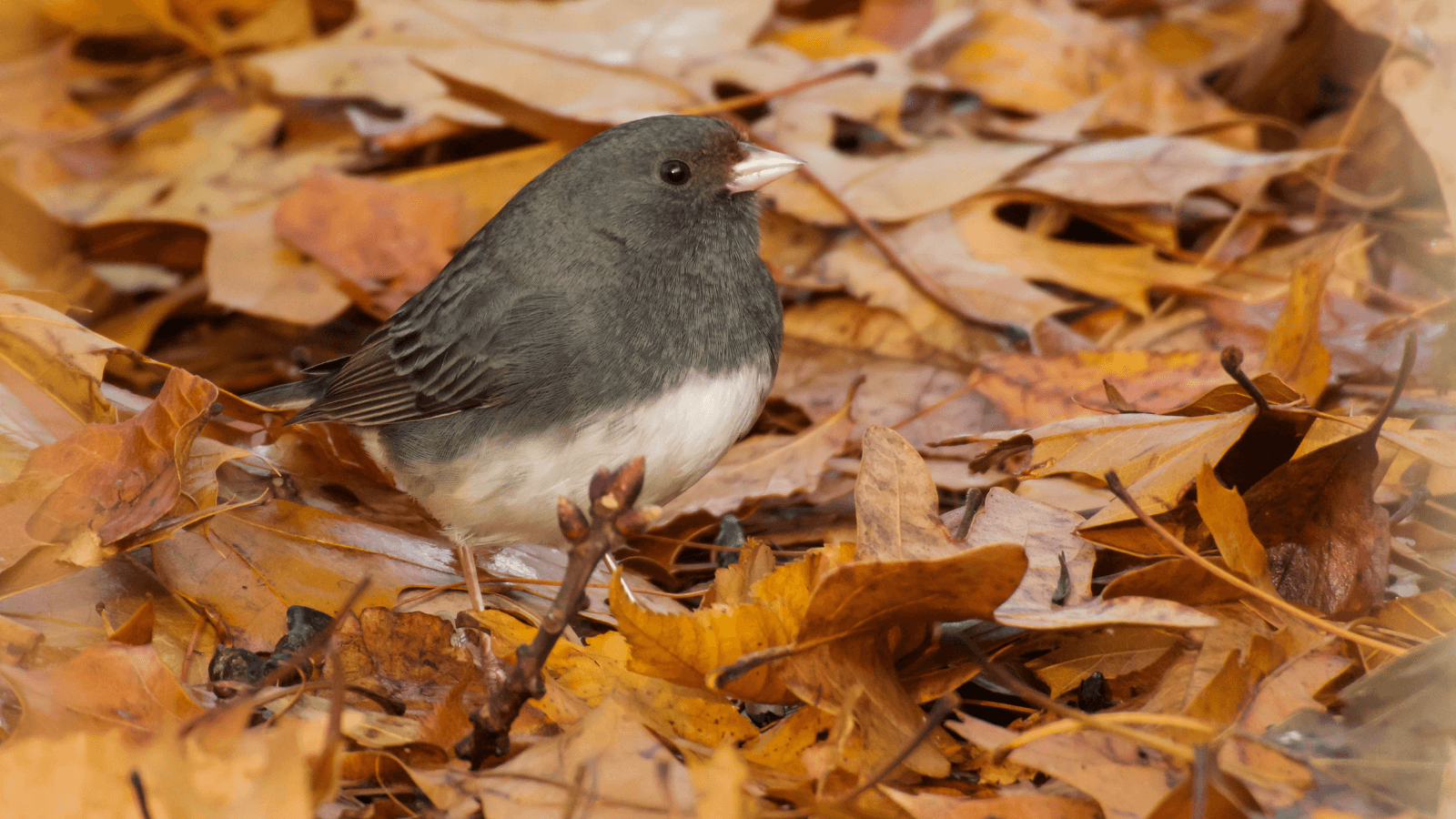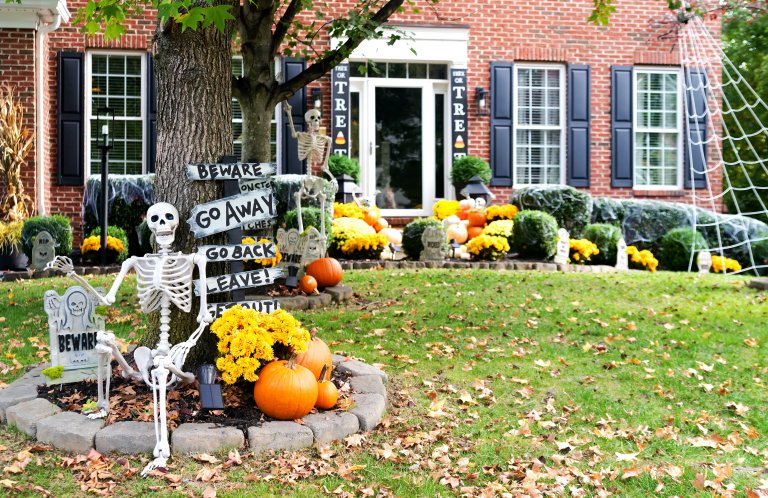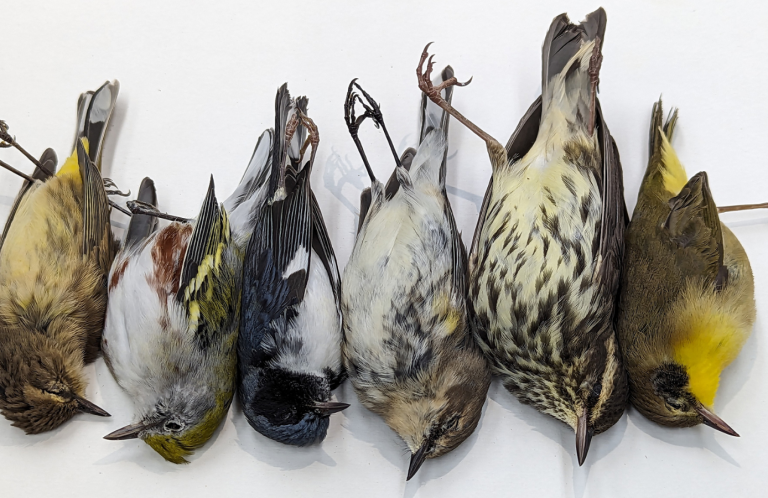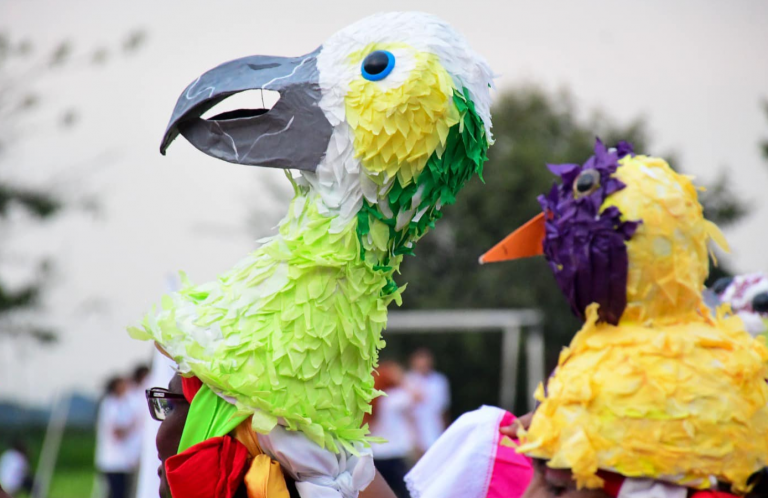How to Help Birds During Fall Migration

In North America, billions of birds are on the move for fall migration. They will collectively fly billions of miles as they journey south to their nonbreeding ground in search of the food and warmth they need to make it through the year. Some birds, like the Red-winged Blackbird, only need to travel a short distance to find the resources they need. Others, like the Arctic Tern, traverse the entire Western Hemisphere.
No matter the distance, migration is a physically taxing and dangerous journey. Given the loss of nearly 3 billion birds in the U.S. and Canada since 1970, American Bird Conservancy (ABC) is encouraging action to help birds survive and thrive. Here are ways to help:
Protect birds from glass collisions.
"Hundreds of millions of birds in the U.S. die from hitting glass every year — almost half of those on home windows,” says Christine Sheppard, ABC's Bird Collisions Campaign Director. Because birds see differently than we do, glass poses a serious risk, especially when vegetation or other habitat is reflected in its surface. Certain migratory birds, such as the Dark-eyed Junco, appear to be particularly vulnerable to this threat.
Luckily, there are many ways to make your windows safe for birds. From tape to screens and films, effective, easy-to-install, and inexpensive home solutions are available to help reduce bird–window collisions. One of Sheppard's favorite methods is applying tempera paint — which is nontoxic, cheap, and easy to use — to the outside surface of glass. The paint can be quickly applied with a sponge, or used to make fun fall-themed designs. Other options are available to peruse on ABC's collision-preventing products database.
“Remember,” Sheppard says, “whatever kind of design you use, make sure your lines are no more than two inches apart to help smaller birds avoid collisions."
Keep pets indoors or supervised when outdoors.
This advice is relevant at any time. Free-roaming pets are natural predators whose presence alone can cause birds stress.
If you have a cat, practice and advocate for treating cats like dogs — that is, providing safe and enriching places for pet felines to live indoors full time, or supervised and contained outdoors using a harness, backpack, or “catio.” Cat owners can also pledge to keep pets responsibly contained.
"Cats are lovable pets, but they're also instinctive predators. One cat alone may kill up to 55 birds each year. It all adds up,” says Grant Sizemore, Director of ABC's Invasive Species Programs.
Even if you don't have a cat, you can still support bird-friendly practices in your community by encouraging the passage of local ordinances mandating responsible pet ownership. ABC's Cats Indoors page has more information.
Garden and landscape with native plants.
Manicured lawns just don't cut it for birds. Sure, you may see an American Robin stop by. But to attract a variety of birds, look for opportunities at your home, school, or business to replace non-native grass with native flowers, shrubs, and trees that support birds as well as the insects necessary for birds' survival. One quick method: cover grass with cardboard or several pages of newspaper, layer on several inches of soil mixed with compost, and plant!
Say no to pesticides.
Pesticides can have both immediate and long-term negative impacts on birds visiting or breeding in your garden. Even though advertising can make common pesticides seem appealing and harmless, by applying them to your garden, you're likely to harm much more than the pests you're targeting. Neonicotinoids (or neonics) — the most widely used insecticides globally — are used as seed coatings and found in products like insect sprays. One seed coated with neonics is enough to kill a songbird, and even less can harm a bird's reproduction. To weed your garden, use your own elbow grease or natural alternatives to chemical-based options. Learn more about organic gardening on our blog.
“Reducing the amount of chemicals used in your garden is so important for birds and the beneficial insects they rely on for migration fuel,” says Hardy Kern, Director of ABC's Pesticides and Birds Campaign. “It's an easy equation: fewer chemicals means more birds!”
Leave it be, and provide snags for clear line of sight.
Where it's practical to do so, leave sticks and leaf litter on the ground. A completely clear lawn doesn't provide much cover for birds. Plant matter attracts birds and promotes foraging activity — the longer birds forage in your yard, the longer you get to enjoy them. A less tidy yard will also help create a nutritious layer of compost that enriches your soil.
“I have a wooded backyard, so I try to leave it as natural as possible,” says Gemma Radko, ABC's Communications and Media Manager. “I let the understory grow and pull invasive plants such as Japanese Stiltgrass and Garlic Mustard. I leave logs and fallen branches in place to shelter insects and other small critters that birds feed on.”
You can even “plant” a large dead branch in your garden or leave some dead branches in living trees to provide lookout points for birds. You may be surprised how quickly hummingbirds, flycatchers, and other birds adopt these “stick” perches, which help them watch for predators, competitors, and food sources.
Support birds from inside, too.
You can support birds whether you have a yard or not. You can use your voice by asking your elected officials to support bird conservation efforts, or help birds by reducing your plastic use and recycling. If you're a coffee drinker, consider purchasing bird-friendly coffee." To meet demand, coffee is often grown on monoculture plantations across the world, which cover hundreds of thousands of acres and reduce habitat for birds and wildlife,” says Andrés Anchondo, ABC's Associate Director for Impact Investment in Latin America and the Caribbean.
“However, there is a better alternative. Shade-grown coffee, cultivated under existing tree canopies, doesn't require deforestation. The Bird Friendly coffee certification developed by the Smithsonian Migratory Bird Center establishes the best coffee farming practices to provide birds with forest-like habitat.”
Make birding welcoming to all.
If you're part of the birding community, follow and support groups like Birdability and the Feminist Bird Club.
"Everyone should be able to enjoy the wonders of bird migration, and we all have a role in making that possible,” says Erica Sánchez Vázquez, ABC's Digital Content Manager. “Many who engage in birding face issues related to discrimination, safety, and access, including birders of color, women, LGBTQIA+ people, or folks with disabilities.”
Having safe, inclusive, and welcoming birding spaces benefits communities and birds alike. More people enjoying birds means a greater diversity of perspectives and experiences that can be used to strengthen and grow bird conservation action.
###
American Bird Conservancy is a nonprofit organization dedicated to conserving wild birds and their habitats throughout the Americas. With an emphasis on achieving results and working in partnership, we take on the greatest problems facing birds today, innovating and building on rapid advancements in science to halt extinctions, protect habitats, eliminate threats, and build capacity for bird conservation. Find us on abcbirds.org, Facebook, Instagram, and Twitter (@ABCbirds).
Media Contact
Jordan Rutter
Director of Communications
media@abcbirds.org


















































